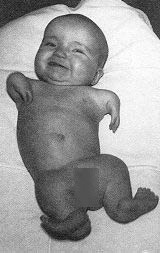When I first entered Science 200, I thought it was going to be easy. My mentor recommended this specific science class because I am definitely not a science person, and Science200 was apparently good for people who don’t particularly like science. After about two weeks of the class, I realized my arrogant attitude was not going to fly. I realized it was going to take a lot more than what I had expected. Passing and getting a good grade was going to take hard work, effort, and a whole lot of time. As I reflect on my experience in this class, I can honestly say that I have learned a lot. I also feel that I have become more independent and responsible by taking this class. It forced me to manage my time, and I am grateful for that. My favorite class by far was the class focused on blood letting and many other topics. I remember being so intrigued during that class. I didn’t look at the time once! So, I decided to do my final blog on that specific class.
During class that day, we talked about sudden infant death syndrome, blood letting, Thalidomide, and when science doesn’t happen. The point of this class was to show that sometimes even the smartest of people only want to believe certain things about their studies. They do not want to look at both sides. This can result in many negative things—such as death. The first person we talked about was a pediatrician named Dr. Benjamin Spock. Spock proposed that babies should sleep on their stomachs while sleeping. His reason for this was because he thought babies might choke if they are on their backs. He even wrote a book on his findings and it turned out to be a best seller. Millions of people were buying his book and listening to his untested advice on babies. Although Spock might have had good intentions, he ended up only hurting the baby population. Because his theories on babies were untested and wrong, he ended up killing tens of thousands of babies. After hearing about this, it proves that everything must be tested, even if certain findings may seem legitimate to people.
The second thing we looked at during this class was something called blood letting. The idea behind blood letting was that too much blood causes certain diseases, such as yellow fever. So, scientists had the idea to remove blood through things such as leeches and sharp instruments. Because blood letting was not tested enough, it ended up killing thousands of people. Today, people are aware that blood letting in most cases hurts rather than helps. Once again, a theory that was not tested enough ended up killing people. The x variable, was the idea that too much blood causes the y variable (yellow fever). Therefore, researchers thought they were right in removing pints of blood at once. They thought doing this would cure diseases like yellow fever.
We learned that the confirmation bias was favoring only certain parts of information (that you want to believe), and not acknowledging other parts. Scientists and researchers often made the mistakes of the confirmation bias. They wanted to believe their own information, and disregard the rest of the information that went against what they believed. The confirmation bias can do nothing but hurt people. A true researcher must look at all of the possibilities during his studies—not just the things he wants to believe.
One last major thing we talked about during this class was something called Thalidomide. Thalidomide was a drug created by a German drug company (Grünenthal GmbH). Pregnant women who took this drug ended up having deformed babies. One woman, however, was skeptical. Her name was Frances Oldham Kelsey. She wanted the evidence and demanded that science be given to prove the German drug did not cause any damages. Here, the null hypothesis would be that the drug does not cause any deformities in babies. The alternative hypothesis would be that Thalidomide does, in fact, cause deformities in babies. Kelsey turned out to be right, and was admired by people around the world. All she asked for was proof, and she was right in doing so. She ended up saving people from having deformed babies.
Overall, I have learned a lot in this class. Things and questions I had never even thought about came up, and it was interesting to see what the results and outcomes of certain studies were. I learned about aliens, animals, and humans. I learned about science and the supernatural. I now know a lot more and feel a lot more informed on certain topics I might want to know about in the future. One thing that really changed my way of thinking is this class in particular. This class truly showed that although doctors always have the best intentions, we can’t just believe everything they say because they are doctors. We have to do as Frances Oldham Kelsey did and ask for proof.
Picture:
Thank you!

